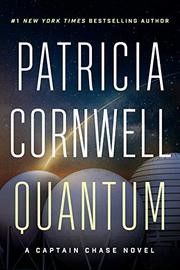In 1801, Thomas Young proved light was a wave, and overthrew Newton’s idea that light was a “corpuscle”.
Quantum physics has been deployed in many fun and creative ways—from the small screen to the big screen, and from novels to games. Take your pick:
We know we’ve not caught everything that has a touch of quantum. Contact us to share your favourites if we’ve missed them!
Fiction
Encounter novel quantum themes in fiction.
-
 Timeline by Michael Crichton
Timeline by Michael Crichton
Quantum teleportation and the multiverse feature in this story as a group of graduate students travel back in time to rescue their professor
https://www.youtube.com/watch?v=lzoINx_2UWA -
 Einstein’s Dreams by Alan Lightman
Einstein’s Dreams by Alan Lightman
Einstein dreams of time as he puts the final touches on his special theory of relativity.
https://www.publishersweekly.com/978-0-679-41646-3 -
 The Three-body Problem by Liu Cixin
The Three-body Problem by Liu Cixin
Humanity makes contact with aliens. Science, from quantum mechanics to artificial intelligence, helps drive the plot and character development in the story.
https://www.tor.com/2014/11/25/three-body-problem-science/ -
 Origin by Dan Brown
Origin by Dan Brown
Quantum computing makes an appearance in this mystery thriller by Dan Brown, the fifth book in the Robert Langdon series.
https://www.nytimes.com/2017/10/03/books/review-origin-dan-brown.html -
 The Quantum Spy by David Ignatius
The Quantum Spy by David Ignatius
With USA and China racing to build the first usable quantum computer, CIA officer Harris Chang is tasked to find a suspected mole in the organisation.
https://www.washingtonpost.com/entertainment/books/for-the-inside-dope-on-how-the-cia-works-the-quantum-spy-cant-be-beat/2017/11/12/e83bdd44-b426-11e7-be94-fabb0f1e9ffb_story.html -
 Quarantine by Greg Egan
Quarantine by Greg Egan
A hard sci-fi book packed with quantum mechanics. It is set in the future where the solar system has been quarantined.
https://www.gregegan.net/QUARANTINE/QM/QM.html -
 Lost and Wanted by Nell Freudenberger
Lost and Wanted by Nell Freudenberger
MIT physics professor Helen Clapp gets a phone call from her dead friend Charlie. Quantum physics is integrated in this story of friendship, love and grief.
https://www.nytimes.com/2019/04/01/books/review/nell-freudenberger-lost-... -
 Quantum by Patricia Cornwell
Quantum by Patricia Cornwell
It is the eve of a top secret space mission, America’s opening bid to establish a quantum internet. Captain Calli Chase, a NASA pilot, quantum physicist, and cybercrime investigator, detects a tripped alarm in the tunnels deep below a NASA research center.
https://www.kirkusreviews.com/book-reviews/patricia-cornwell/quantum-cornwell/ -
 The Rise and Fall of D.O.D.O. by Neal Stephenson and Nicole Galland
The Rise and Fall of D.O.D.O. by Neal Stephenson and Nicole Galland
Quantum physics meets magic in this fun read, featuring superposition and alternate realities.
https://www.theguardian.com/books/2017/jun/15/the-rise-and-fall-of-dodo-...
Going to the movies
Quantum physics has inspired movie plots, perhaps most notably Marvel’s Antman movies and Avengers: Endgame. Besides time travel and the multiverse, quantum computing and quantum teleportation have also made their way to a big screen near you. Here are reviews of some movies with these themes:
-
 12 Monkeys (1995)
12 Monkeys (1995)
Changing the past is an exercise in futility. The hero of the movie goes back to a period before a world-altering tragedy, not to stop it, but to learn and gather information about it.
https://film.avclub.com/12-monkeys-is-hard-sci-fi-with-a-soft-center-1798233211 -
 Interstellar (2014)
Interstellar (2014)
Before we got our first ever image of a black hole in 2019, the creators of Interstellar were figuring out how to show wormholes and black holes onscreen. Scientific American has an interview with Kip Thorne, the Caltech physicist who was a science advisor for the film.
https://blogs.scientificamerican.com/observations/parsing-the-science-of-interstellar-with-physicist-kip-thorne/ -
 Predestination (2014)
Predestination (2014)
A time traveller, Temporal Agent, is sent back in time to stop crimes before they happen. It's not only time travel, questions of free will are also raised in the movie.
https://www.tor.com/2015/01/12/whatever-will-be-will-be-predestination-and-the-time-travel-movie/ -
 Source Code (2011)
Source Code (2011)
The many-worlds interpretation of quantum theory is the basis of alternate realities and parallel worlds in this movie.
https://www.wired.com/2011/02/source-code-science/ -
 Tron: Legacy (2010)
Tron: Legacy (2010)
Look out for quantum computing and quantum teleportation in the plot of this film.
https://www.scientificamerican.com/article/science-of-tron/
TV at home
You can catch quantum physics on the small screen as well.
-
 The Big Bang Theory
The Big Bang Theory
This well-known sitcom is about a group of friends who are physicists, scientists and engineers. You’ll hear about string theory, Heisenberg, Schrödinger’s cat and more.
https://www.vulture.com/article/smartest-big-bang-theory-episodes-science.html -
 Stranger Things
Stranger Things
There is the idea of a parallel universe, and even references to Hugh Everett’s many-worlds theory. In the latest season, Planck’s Constant gets a mention.
https://www.space.com/stranger-things-plancks-constant.html -
 Futurama
Futurama
This animated series references the observer effect in one episode.
https://io9.gizmodo.com/10-futurama-jokes-that-will-make-you-smarter-1676659998
Here is a blog post capturing quantum references that you might have noticed in other TV shows:
https://sagepus.blogspot.com/2018/11/quantum-leaks-uses-of-scientific.html
Shall we play a game?
There are many games that have a quantum spin. You may like to check out the quantum games projects by our scientific partners - IQIM has a quantum games programme and EQUS organises a quantum game development competition.
To start playing, here are some quantum-inspired games:
-
 Quantum Break
Quantum Break
Time travel is part of the storyline in this game.
https://www.wired.co.uk/article/quantum-break-interview-sam-lake -
 Quantum Cats
Quantum Cats
An Angry Birds-style game, with cats with quantum powers.
https://uwaterloo.ca/news/news/new-quantum-cats-game-launches-better-understanding-quantum -
 Quantum Chess
Quantum Chess
Chess gets a quantum upgrade in this game.
https://quantumfrontiers.com/2016/02/15/quantum-chess/ -
 qCraft
qCraft
Quantum mechanics meets Minecraft.
https://www.caltech.edu/about/news/qcraft-introduces-gaming-kids-quantum-principles-40992 -
 Quantum Moves
Quantum Moves
A game based on a real problem in quantum experiments.
https://www.nature.com/news/human-mind-excels-at-quantum-physics-compute...
Besides games that draw on quantum ideas, there is a burgeoning field of games for quantum computers. These are games programmed to run on quantum computers. These games could demonstrate practical uses for quantum computing. They are also a way for the public to access and interact with quantum computers. Read more at the following links:
https://medium.com/@decodoku/the-history-of-games-for-quantum-computers-a1de98859b5a
https://gizmodo.com/what-will-quantum-computer-games-be-like-1827405067
https://www.digitaltrends.com/cool-tech/quantum-computing-video-games/
